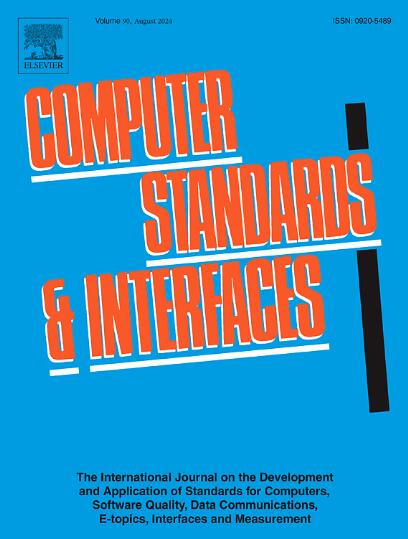基于格的区块链物联网平台:基于格盲签名的隐私增强应用
IF 3.1
2区 计算机科学
Q1 COMPUTER SCIENCE, HARDWARE & ARCHITECTURE
引用次数: 0
摘要
物联网(IoT)的快速发展为远程监控、数据共享和实时分析创造了新的机会。然而,量子计算的出现带来了重大的安全和隐私挑战。本研究提出了一种后量子安全区块链框架,该框架包含用于物联网应用的基于格的盲签名方案。该框架采用多层结构(MLS)来提高效率。它采用STARK协议,一种后量子零知识证明(ZKP)结构,在不暴露设备身份的情况下进行安全验证。基于格子的盲签名方案,建立在具有错误的模块学习(MLWE)问题的硬度上,保证了数据传输的安全性和匿名性。Kyber在盲化过程中的安全随机性增强了对量子攻击的抵抗力。此外,数据的完整性和不可否认性通过使用diiliium签名得到加强。在MLS中集成了阈值逻辑时钟(TLC)和基于事件的智能合约(EBSC),减少了通信开销并优化了区块链效率。TLC使用基于阈值的聚合触发单个事务的智能合约,确保可靠的时间戳。EBSC利用这些同步时间戳来提高执行效率。涉及电化学传感器数据的用例场景演示了该框架在保护敏感数据免受量子威胁的同时保持可扩展性的能力。本文章由计算机程序翻译,如有差异,请以英文原文为准。
Lattice-based blockchain platform for IoT: Privacy-enhanced application with lattice-based blind signatures
The rapid expansion of the Internet of Things (IoT) has created new opportunities in remote monitoring, data sharing, and real-time analysis. However, the emergence of quantum computing presents significant security and privacy challenges. This study proposes a post-quantum secure blockchain framework incorporating a lattice-based blind signature scheme for IoT applications. The proposed framework adopts a multi-layered structure (MLS) to enhance efficiency. It employs the STARK protocol, a post-quantum zero-knowledge proof (ZKP) structure, for secure verification without exposing device identities. The lattice-based blind signature scheme, built on the hardness of the module learning with errors (MLWE) problem, ensures secure and anonymous data transmission. Kyber’s secure randomness in the blinding process strengthens resistance against quantum attacks. Additionally, data integrity and non-repudiation are reinforced using Dilithium signatures. The integration of a threshold logical clock (TLC) and event-based smart contracts (EBSC) within the MLS reduces communication overhead and optimizes blockchain efficiency. TLC triggers smart contracts with a single transaction using threshold-based aggregation, ensuring reliable timestamping. EBSC utilizes these synchronized timestamps for more efficient execution. A use-case scenario involving electrochemical sensor data demonstrates the framework’s ability to maintain scalability while protecting sensitive data against quantum threats.
求助全文
通过发布文献求助,成功后即可免费获取论文全文。
去求助
来源期刊

Computer Standards & Interfaces
工程技术-计算机:软件工程
CiteScore
11.90
自引率
16.00%
发文量
67
审稿时长
6 months
期刊介绍:
The quality of software, well-defined interfaces (hardware and software), the process of digitalisation, and accepted standards in these fields are essential for building and exploiting complex computing, communication, multimedia and measuring systems. Standards can simplify the design and construction of individual hardware and software components and help to ensure satisfactory interworking.
Computer Standards & Interfaces is an international journal dealing specifically with these topics.
The journal
• Provides information about activities and progress on the definition of computer standards, software quality, interfaces and methods, at national, European and international levels
• Publishes critical comments on standards and standards activities
• Disseminates user''s experiences and case studies in the application and exploitation of established or emerging standards, interfaces and methods
• Offers a forum for discussion on actual projects, standards, interfaces and methods by recognised experts
• Stimulates relevant research by providing a specialised refereed medium.
 求助内容:
求助内容: 应助结果提醒方式:
应助结果提醒方式:


